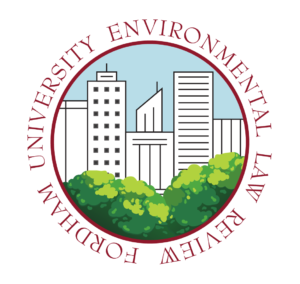Change is the New Normal: Wind Law, Climate Change Adaptation, and Endangered Species
Authored by: Kayla Molina, University of Oklahoma College of Law, J.D. 2021, M.A. in Environmental History
Edited by: Michael Chambrelli, Fordham ELR Online Editor 2021-22
The “effects that scientists had predicted . . . would result from global climate change are now occurring.” While people fight forest fires and flee rising ocean levels, climate change is also altering the legal landscape of wind energy development. As wind patterns change from climate change, so too do bird and other animal migration, hunting territory, and breeding patterns as local ecosystems become less hospitable. Subject to the Endangered Species Act (ESA) wind developers can no longer rely on old ecosystem data models and instead must focus on incorporating forecasting models that trace changes in both wind patterns and ecosystems.
When finding sites for turbines, developers use historical wind resources data “under the assumption . . . the wind today will remain approximately constant into the future.” This is no longer true as an international team of scientists tracked a climate change-caused shift in wind patterns that altered the way plant seeds disperse, where birds fly, and when and where rains come—ecosystems can and are transforming dramatically and animals once common to a local area will disappear and be replaced. These changes are especially harmful to localized native plants and animals as the more climate-adapted, invasive species spread. Already, earth’s species are going extinct 1,000 times faster than expected.
As the climate changes and more species become endangered wind developers, and those who advise them, must contemplate their ESA liabilities as climate change alters local habitats. A wind project should not cause harm and because the ESA prohibits actions that will cause future harm, wind developers in the age of climate change should think creatively about potential on-the-ground changes caused by shifting wind patterns.
Throughout the country, courts interpret the ESA broadly, apply it strictly, and their expectations for reasonable enforcement evolve as technology and circumstances change. For wind projects, agencies must analyze the “indirect effects” of turbine construction, maintenance, and deconstruction on at-risk species before issuing permits. However, agencies may be slow to adopt different methods of analysis such as in Sierra Club v. Bureau of Land Management, when the Ninth Circuit suggested the BLM’s reliance on an area’s historical regional data did not satisfy an indirect effects investigations, and instead the agency should have contemplated the future effects of turbines and climate changes at sites up for permitting. As regional wind patterns alter local ecosystems, the number of endangered species will increase while others migrate in a search for new territories due to habitat shrinkage. On the west coast, for example, the greater sage-grouse were in an “extinction vortex” from wildfires, livestock grazing, and other human developments. Within the sage-grouse’s limited habitat between 40 to 69 wind turbines were almost constructed on 10,500 acres of privately-owned land. However, in Oregon Natural Desert Association v. Jewell, the Ninth Circuit wrote that developers must presume that environments are in flux from not only the wind turbine itself but also climate change. As the circuit court said: “[r]enewable energy projects, although critical to the effort to combat climate change, can have significant adverse environmental impacts, just as other large-scale developments do” and must be analyzed as strenuously. Successful adaptation means that “the economic and engineering calculus of wind resource management should consider projected changes” in the climate and local ecosystems.
Much like these changing physical landscapes, wind developers and the lawyers who represent thing will need to adapt to confront new legal challenges, and failure to do so can result in delays and increased costs.

